Atonement in the Jungle
In this Field Dispatch: the extraordinary life and work of a rancher turned environmental protector. And, our ride from Tunja to Puerto Triunfo – in words and photos.
We started the new year in a rush. With the afternoon sun mercilessly beating down, we raced along the road connecting Medellin and Bogotá.
In December there had been mountains to explore, so we’d cycled north instead of south toward Ushuaia. But, as the steep descents and sudden switchbacks now made clear, exploring the Andes AND working as journalists was going to have a price.
Our destination in this mad rush? The Rio Claro Nature Reserve where, on assignment for The Guardian, we were to meet Juan Guillermo Garcés, a 74-year-old environmental activist.
Finally, the reserve spread before us: a marble canyon where crystalline waters cut through ancient limestone, home to endangered species found nowhere else in the world. But like much of Colombia, this paradise and Garcés, its founder, are the product of a complex and violent history.
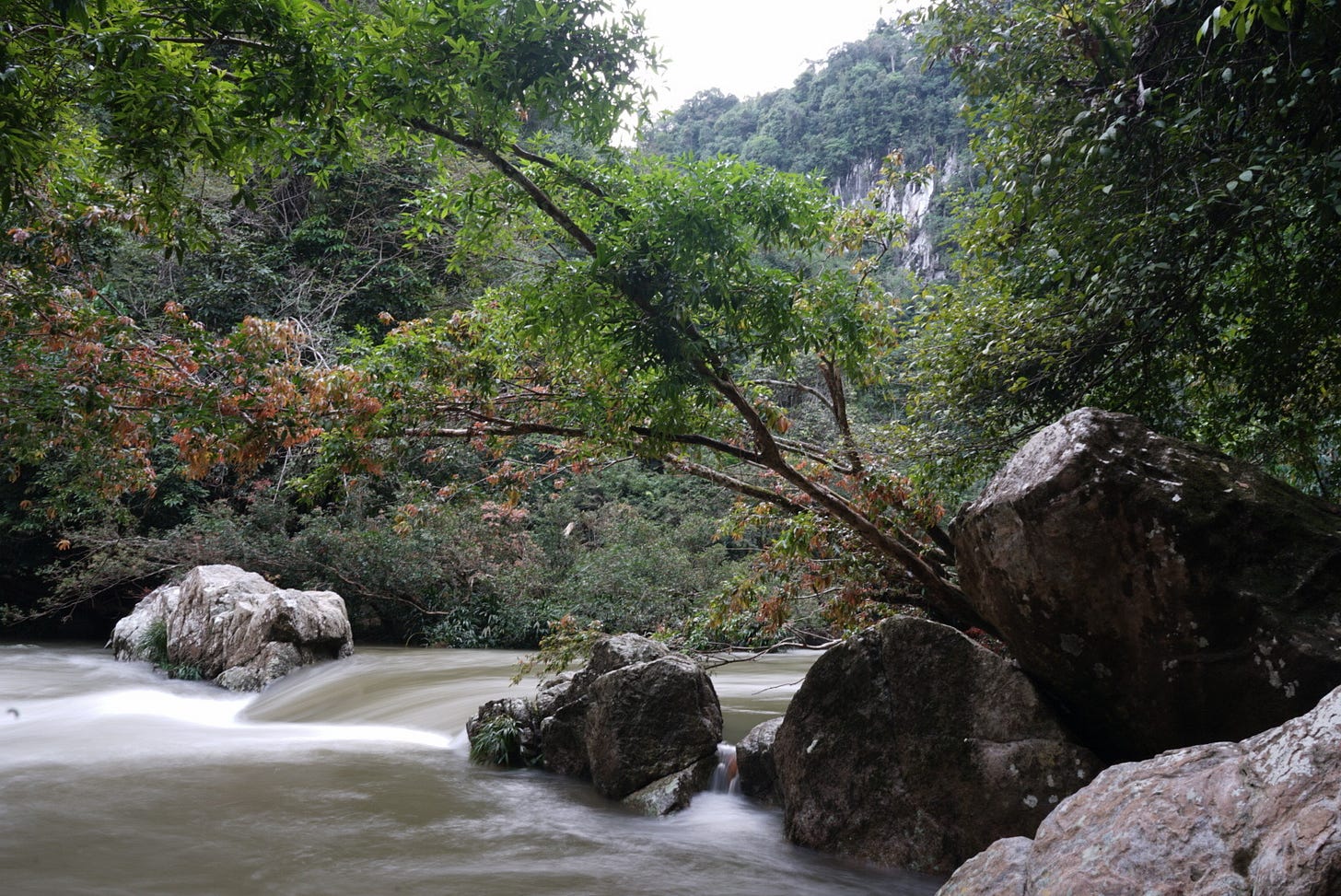
Garcés was born in 1949 to a conservative family with a large ranch on the banks of Colombia’s Magdalena River. A year earlier, the assassination of liberal Colombian presidential candidate, Jorge Eliécer Gaitán, had detonated a civil war between liberals and conservatives in the country. La Violencia, as it is commonly known, would claim hundreds of thousands of lives in the next decade.
He first experienced this brutality up close as a boy of five.
It was New Year’s Eve and the Garcés family had just finished prayers, when a ranch hand burst in, panicked. Liberal militants had sent word: vacate the estate or die. Garcés remembers how the family grabbed what they could and fled on a leaky canoe.
“Just as we arrived at the village, it struck midnight,” he tells us. “Everyone started singing, shouting, throwing colored streamers—celebrating. But my mom, my grandmother, my sister—they were all crying. I’ll never forget that moment.”
His family never returned to their ranch. His father sold the land and bought a new plot, where he—like everyone else—paid extortion to a local conservative gang boss, alias Hachero, to keep liberal militants at bay.
After La Violencia ended in a shaky power-sharing agreement in 1958, Garcés' father saw no reason to keep paying for Hachero’s protection.
Hachero disagreed, shooting Garcés Sr. point-blank and going on a macabre killing spree across three farms. Juan Guillermo was just 12 years old. Authorities eventually hunted Hachero down, allowing the grief-stricken family to return to their land.
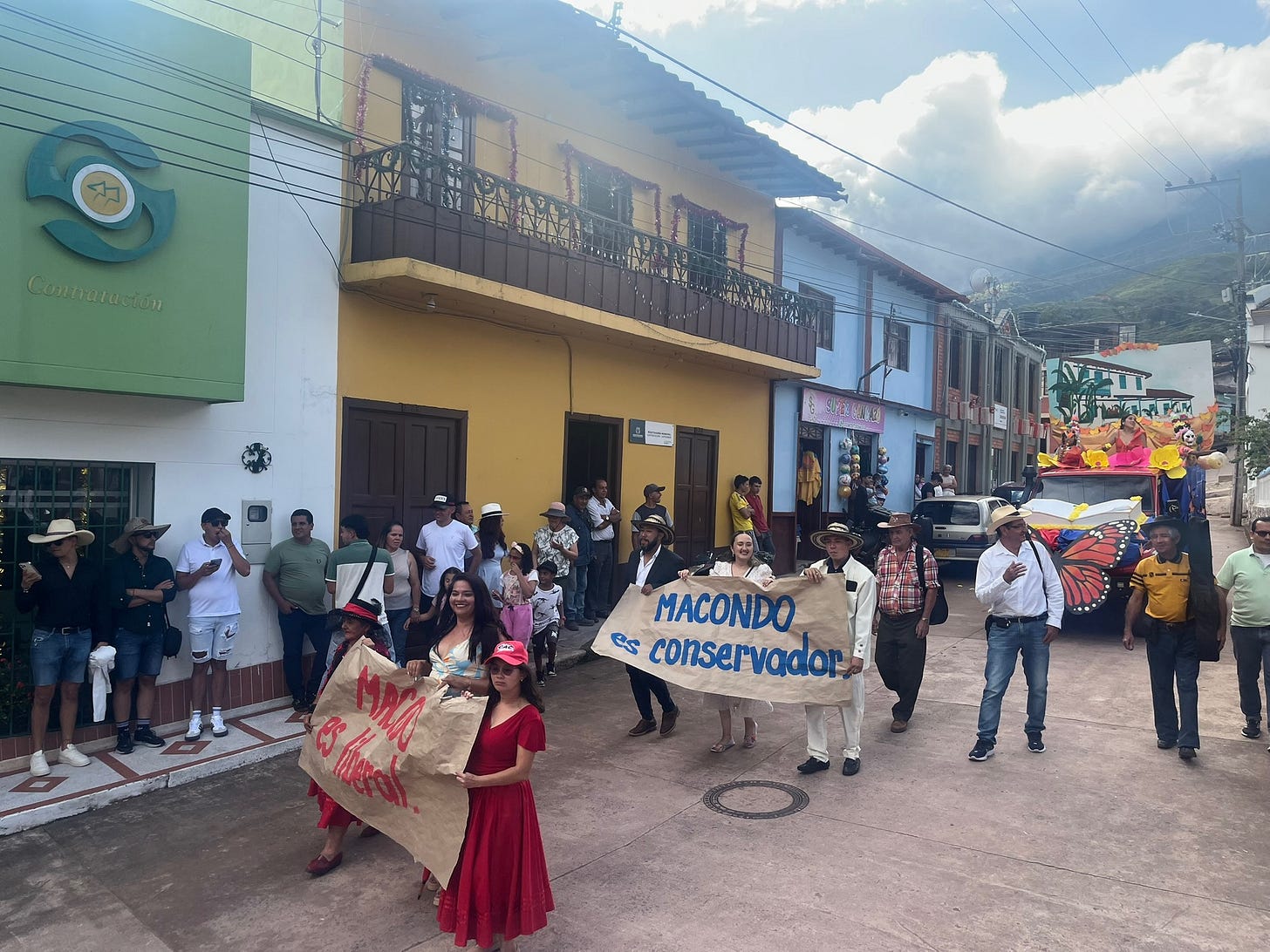
While his older brother quit school to run the ranch, Garcés continued his studies at a Catholic school in Envigado, a small municipality that today bleeds into the metropolis of Medellin. There, a secular biology teacher introduced him to Darwin’s theory of evolution.
“It was like having a curtain lifted. It was cinematic. Something changed in me,” Garcés says of learning that the natural world hadn’t been created in seven days.
At 13 years old, Garcés couldn’t keep his discovery to himself, and by the end of that day, the Catholic priests who ran the school expelled him from the school. Deeply ashamed, his religious family punished their youngest by sending him to work as a ranch hand for his brother.
With formal schooling interrupted a different sort of education began. Garcés devoured books on biology, including all of Darwin’s works, from a hammock strung high in the jungle trees that then still dotted the family land. But, working alongside peasant farmers, he also developed a new appreciation for Colombia’s socio-economic inequality.
With the help of his best friend, Gustavo, Garcés passed the university’s entrance exams despite being a dropout. He enrolled to study biology but was quickly swept up in the powerful leftist student movements on campus, which promised to solve the inequality he’d seen on the ranch.
Garcés joined a leftist political party that explicitly rejected violence, just as Colombia was entering a new phase of conflict.
Left-wing guerrillas, inspired by the same Marxist ideology Garcés embraced, waged war against the government. Right-wing paramilitaries, often funded by landowners, fought back. By the 1980s, drug traffickers like Pablo Escobar added another layer of complexity.
A left-leaning activist, landowner, and Escobar’s neighbor, Garcés would find himself repeatedly caught in the crossfire.
At university, he’d progressed from member to leader within the student movement. This made him a target for assassination, forcing him to drop out and go into hiding.
“And that’s how I ended up killing Gustavo,” Garcés recalls.
He’d been hiding from right-wing assassins at the family home, struggling to sleep, with a revolver at his bedside. He heard someone climbing through the window and fired a warning shot into the dark. Then, he found himself holding Gustavo, who – not thinking of how a midnight intruder might spook the hunted Garcés – had come to crash there after a night in town.
Wracked with guilt, Garcés sank into a deep depression. But in time, he came to see that the only way forward was forgiveness.
“I had to ask the universe for forgiveness. I had to ask myself for forgiveness. And I had to forgive the whole world,” he says.
That belief became his compass in the decades ahead – when Escobar’s violence displaced him from the ranch; when leftist guerrillas kidnapped him for ransom; and when right-wing paramilitaries ordered him killed, forcing him into exile abroad.
Garcés refuses to hold ill will towards any of these groups.
And, to seek atonement for his own wrongs against man and nature, he’s dedicated his life to preserving one of Colombia’s most vulnerable habitats, first from the highway by which we’d arrived and then from a series of other man-made threats. That’s where the Rio Claro reserve comes in.
“The peasant farmers, my father’s murder, my love of biology. It all came together when I discovered Rio Claro and decided to protect it,” he says.
This work is the focus of our article for The Guardian, below. It is the first in a series called Nature Heroes, a look at how individuals around the world are working to preserve and enhance biodiversity.
‘I felt death in the flames’: how lighting a forest fire inspired one man to transform barren ranches into rainforest
This article was originally published courtesy of the Guardian News & Media Ltd. Read the original here.
Juan Guillermo Garcés remembers coming face to face with death at age 17. Smoke filled the air, choking his lungs. The temperature rose and Garcés struggled to see through the haze. Panic set in as he watched monkeys, snakes, lizards and birds desperately trying to escape the flames surrounding them.
Garcés and his brother started the fire that nearly killed them to clear a large stretch of land. But when the wind suddenly changed direction, they found themselves locked in. The brothers survived, but the fire destroyed the little remaining patch of virgin forest on the family’s 2,500-hectare (6,200-acre) ranch, nestled along Colombia’s Magdalena River. Experiencing firsthand what the animals and plants endured was a turning point for Garcés.
“I felt death there in the flames,” he says. “When you’re about to be burned alive, you become painfully aware of the destruction you have caused.”
In an attempt to undo the damage he caused in his youth, the 74-year-old created the Rio Claro nature reserve, a 3,000-hectare (7,400-acre) oasis teeming with wildlife. Today, Garcés’s reserve marks him as one of Colombia’s most successful environmental protectors.
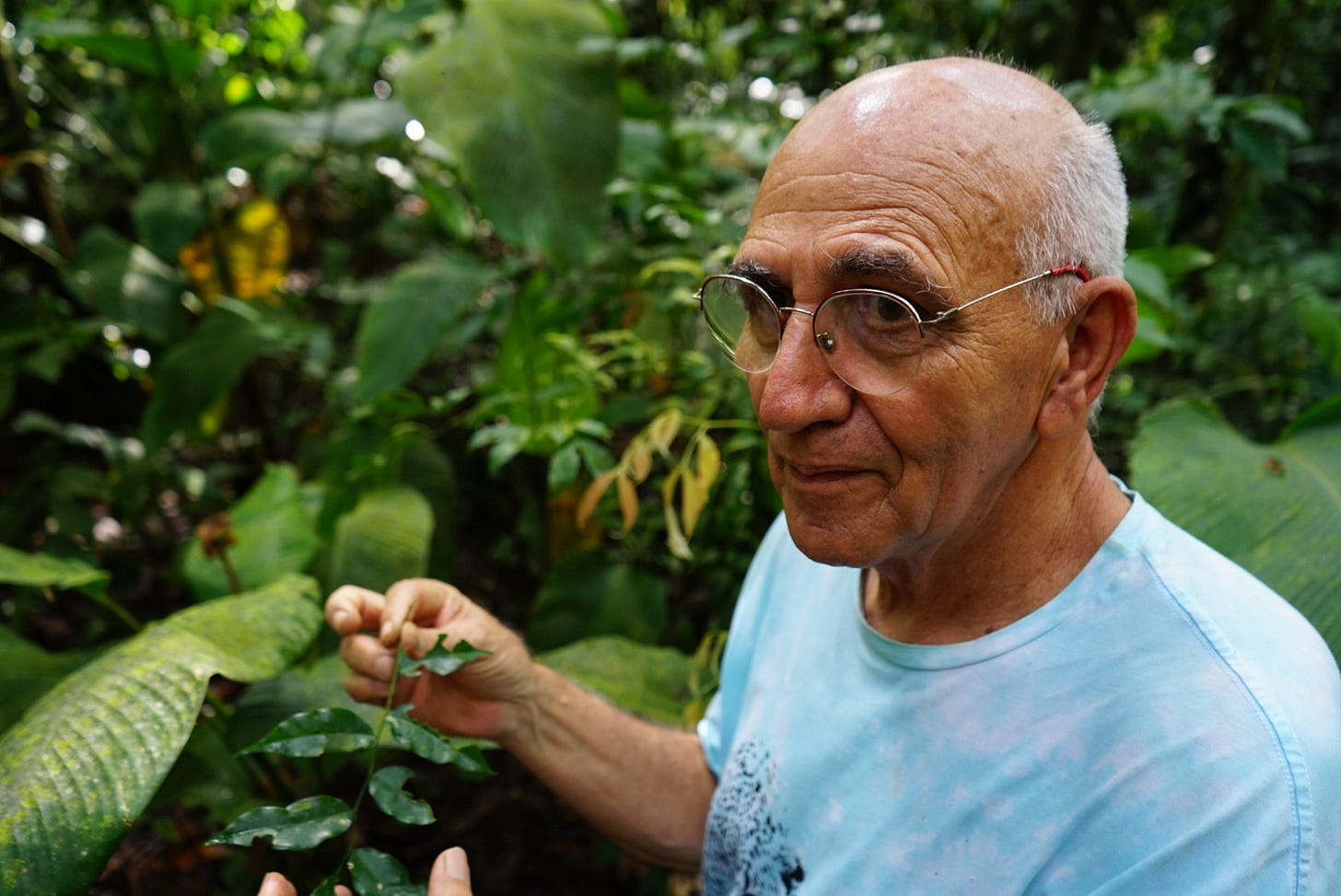
Many of the species that fled Garcés’s fire more than five decades ago find refuge in the reserve, climbing in the canopy and drinking from the clear, deep river the reserve is named after.
It owes its biodiversity partly to the marble bedrock upon which its jungle grows. This geological phenomenon, known as a karst forest, creates conditions for unusually high numbers of rare and endemic species. The Rio Claro basin is home to almost 850 species of fauna and more than 3,000 of flora.
“More than 100 new species have been discovered in Rio Claro … and counting,” says Saúl E Hoyos-Gómez, a botanical biologist. “It is a very special place – one of the few where you can find this level of biodiversity.”
___
Garcés was born into a ranching family in an era when the Colombian government encouraged ranchers to push the boundaries of expansion and “settle” the seemingly infinite jungle. “Whoever was first to cut down the forest, whoever was first to destroy nature, would become the land’s owner,” says Garcés.
He would probably have become a rancher too, if not for events that profoundly altered his worldview. One such moment was almost being burned alive.
Another was first seeing the untouched natural paradise near the Garcés family ranch, soon to be destroyed by a road-building project.
“Seeing how crystal-clear the river was, I threw in a small silver coin,” he says. “It sank about four meters, yet we never lost sight of it.”
Recovery in the hot and humid climate is fast. Left alone, pasture reverts to jungle within decades.
Garcés decided to settle the land – this time, to save it. To lay his claim, he cleared a small patch of forest, planted cocoa, and moved into a cave on the river, where he lived for two years before building a small house. It took nearly 20 years for the government to officially recognise his ownership. By that time, Garcés had renounced ranching altogether to dedicate his life to reforestation.
His method is simple. He buys plots of land from peasant farmers, often deforested pastures, and then lets them rest. Recovery in the region’s hot and humid climate is fast. Left alone, pasture reverts to jungle within decades. About 80% of Garcés’ reserve consists of land reforested in this way.
To build his reserve, Garcés has had to navigate complex relationships with peasant farmers, the government and armed groups – each with their own interests.
Colombian politicians have promised to prioritise nature but, in practice, conservation results still largely depend on the country’s armed groups. These groups sometimes drive deforestation in areas they control, but also often limit it because they rely on the forest canopy to hide from government forces.
The forest nearest to the reserve is home to several armed groups. For Garcés, the security risk of expanding in that direction is too big. But the groups’ presence has kept others out too, limiting deforestation for now.
The reserve also owes much of its biodiversity to armed groups, who displaced peasant farmers, allowing the recovery of the ecosystem. The demobilisation of many of the groups since the turn of the century has put this land back on the market. Many of the farmers displaced decades ago were too old to return and few of their descendants showed an interest, according to Garcés. Many needed money and were eager to sell the family land.
Garcés bought up as much of the land as possible to grow his reserve and save it from investors wanting to restart ranching. He finances his project by setting aside a small part of the land for eco-tourism.
Growing numbers of Colombian landowners are following Garcés’s lead, turning pastures into reserves. This trend may help the country achieve its international pledge to protect 30% of its land by 2030, especially since much of it is privatised.
Still, private reserves remain far smaller than those controlled by government. The main association of private reserves protects 70,000 hectares (173,000 acres) in total, while national parks protect, in theory, more than 20m hectares.
Private reserves also face an uncertain future after their founders’ deaths. Garcés is still searching for ways to legally protect his life’s work.
“I have never really been the owner of these forests, nor could I be,” he says. “If the law allowed, I would leave [the reserve] to the trees, to the animals. They are the true owners of this ecosystem.”
The Bicycle Diaries: Tunja to Puerto Triunfo
Steep climbs, colonial villages, and Colombia’s fast-fading glaciers—our latest ride took us from the heights of the Sierra Nevada del Cocuy to the Magdalena’s forgotten railroads. Here’s what we saw.

The first weeks were spent at altitudes of 2,000 to 4,000 meters – tierra fría, Colombia's (relatively) cold lands. Frank and Fabienne, friends from the Netherlands, joined us for the first 10 days. Both are avid cyclists and we moved quickly through mountains, canyons, and páramos despite some serious climbing. After saying goodbye to them, we descended to Colombia’s biggest river, the Magdalena, and followed its mercifully flat banks to Puerto Triunfo.
We took off from the city of Tunja, two hours north of the capital, Bogotá.
One of our first stops was Lago Tota, which at over 3,000 meters is the second biggest high-altitude lake in South America. On the weekends the lake is overrun by tourists from Bogotá. But we set up camp on a Tuesday and had the photogenic white beach to ourselves.
The next morning, we circled the lake and climbed out of the valley on a steep unpaved road before descending to Monguí, population 5,000.
Founded in 1601, Monguí is a national heritage site that boasts stunning colonial architecture and a unique tradition—hand-crafting footballs. More than 30 factories, mostly mom-and-pop workshops, produce over half a million balls a year.
The tradition goes back to the 1930s when Colombia – then at war with Peru – deployed a young Monguí soldier to the tri-border area between Colombia, Peru, and Brazil. It’s unclear how and where exactly, but the soldier picked up the art of sewing footballs from the Brazilians and brought it back home.
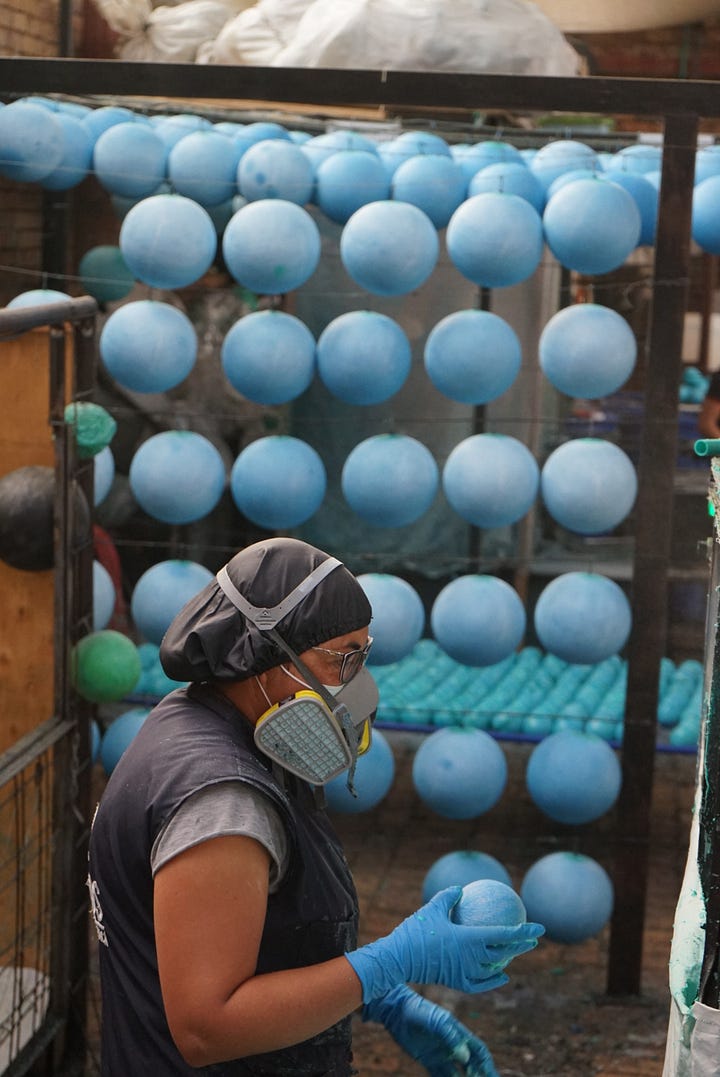
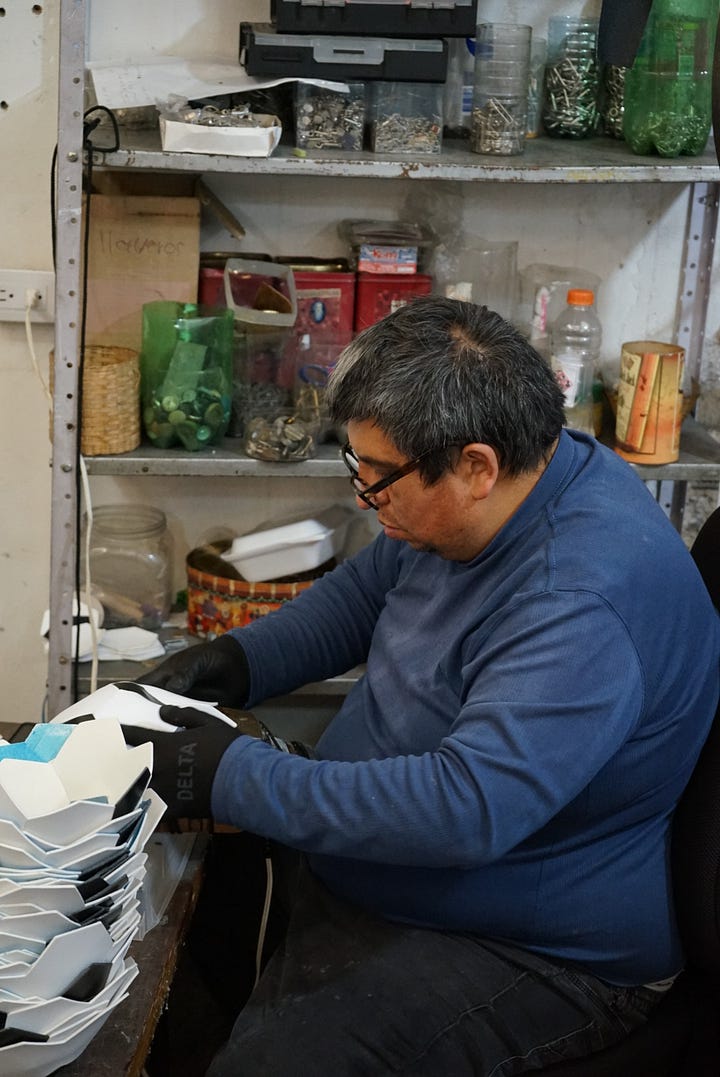

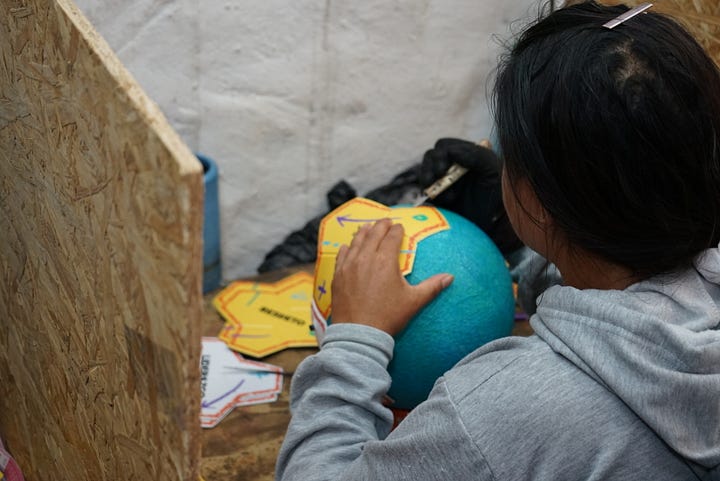
After leaving Monguí, we gradually climbed to the highest pass of the trip so far (4,100 meters) and caught our first glimpse of Sierra Nevada del Cocuy and its majestic glaciers. That high up, there is little wildlife, and the mountains mute surrounding noise, so we rode down to El Cocuy in a cinematic silence, shattered only by our bikes and the rustling of our dusty rain jackets.
In El Cocuy we checked into a once-stately but now rundown hotel on the main square. El Cocuy is a town frozen in time: its colonial houses - all painted white and green - have a serenity seldom seen in Colombia. The streets are quiet, many doors and windows shut, and there’s a notable absence of the cheap speakers blaring loud music so ubiquitous in other parts of the country.
Tourism, mostly from Bogotá, drives the local economy. But visitors don’t come to El Cocuy for the peace or architecture. Instead, they flock here on the weekends to hike the glaciers - for many Colombians their first encounter with snow.
These glaciers are rapidly melting and El Cocuy's tourism industry faces an uncertain future. Without snow, the hikes – and the town – will lose much of their appeal.
We spent our last night with Frank and Fabienne in La Uvita, arriving just as the town celebrated the Aguinaldo Uvitano. In theory, this is a religious Catholic celebration marked by communal prayer, but we found it to be closer to a mix of Saint Patrick’s Day and Halloween.
Townspeople came decked out in their most horrifying costumes - young men dressed as faceless “sexy” nurses padded their butts and stuffed balloons under their shirts. They spoke in high squeaky voices and accosted other men with flirtatious but aggressive demands to be bought drinks. Others dressed as clowns and carried large cuts of meat with which they tried to slap bystanders in the face.
After saying goodbye to Frank and Fabienne, we continued to Barichara where we planned to celebrate Christmas. With its cobblestone streets and beautiful sandstone houses, this storybook village looks like the inspiration for Disney’s “Encanto”.
The historic town is relatively wealthy. That wealth is built on tobacco profits and – more recently – tourism. But tobacco farming depleted the land, and the richness of Barichara’s architecture now falls against a backdrop of forest turning to desert.
Leaving Barichara, we entered “tierra caliente” and rode through scorching heat that would accompany us for weeks to come.
On a rocky, clay road between Socorro and Contratación, a couple on a motorcycle stopped us to chat. They invited us for coffee whenever we reached the town. “Just ask for us when you get there, everyone knows where we live,” they said.
In the end, we stayed with them for two days, fascinated by Contratación’s history as a leper colony and reality as a treatment center (that story coming soon).
We started the new year with some of the roughest roads either of us has ever ridden. Steep hills and boulders, covered in mud deep enough to hold the bikes up, made for slow progress.
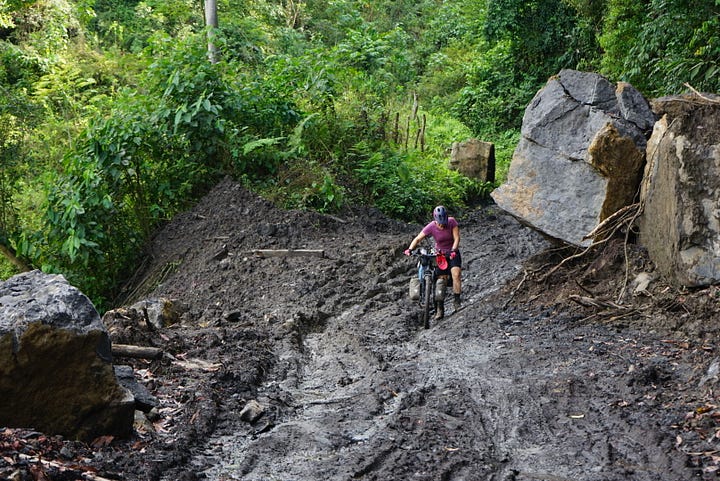
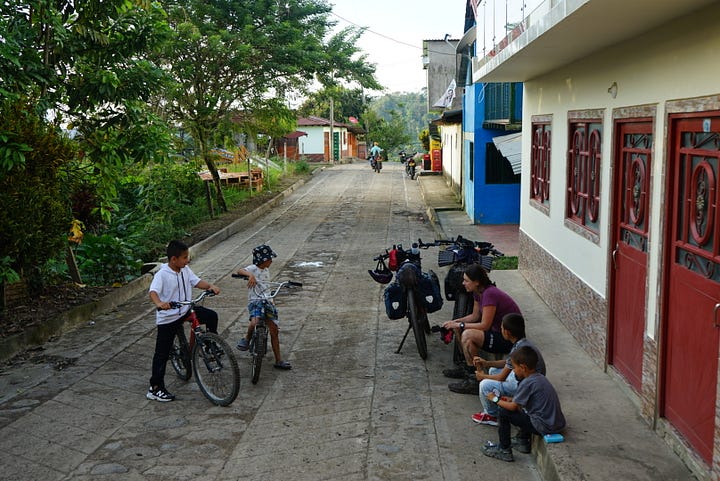
Finally on pavement again, we made our way to the Magdalena River, first crossing it by boat and later catching a ride on a cart along a stretch of railway.
Colombia's train system once connected internal trade centers to its ports. Along the Magdalena there are still some cargo trains today, but most of the network has been abandoned – it lays quiet, slowly falling into disrepair.
Locals have developed ingenious low-tech ways to put it to use, mounting bike or motorbike-driven carts onto the rails. As we rode along, sitting in plastic chairs and holding our bikes with one hand, Anastasia’s cap flew off. The driver paused our 5-kilometer ride to Santiago Berrio and casually jogged back to get it — just another day on the job.
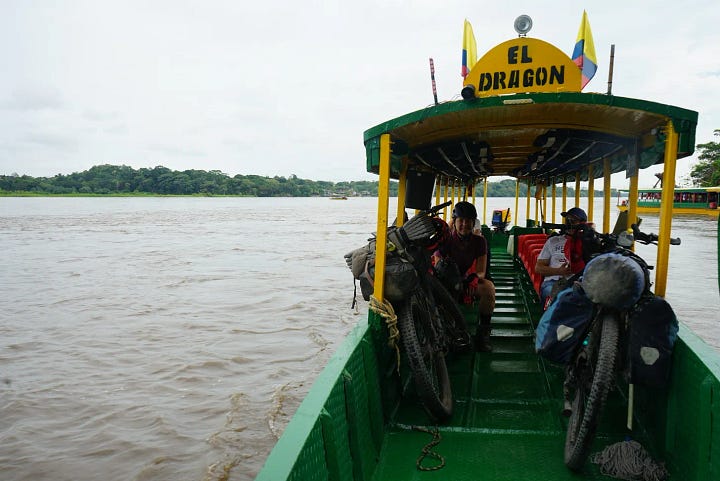
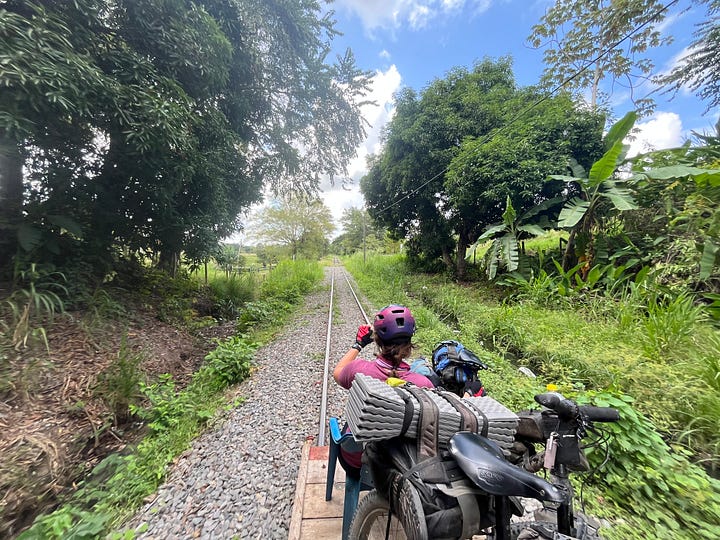
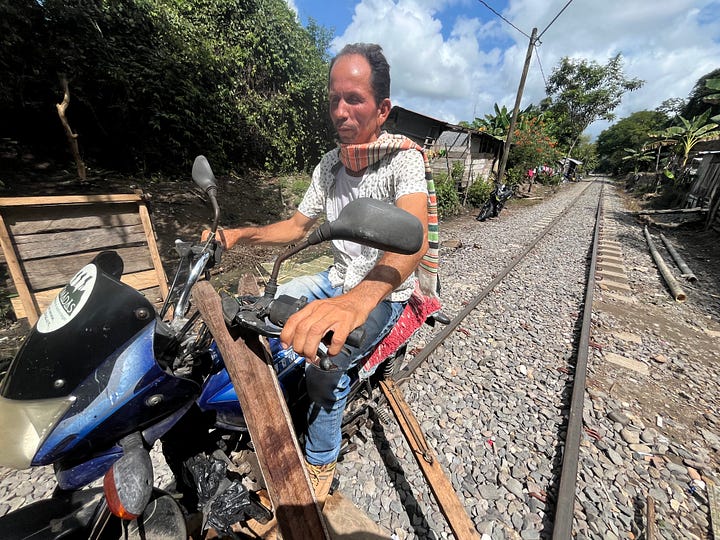
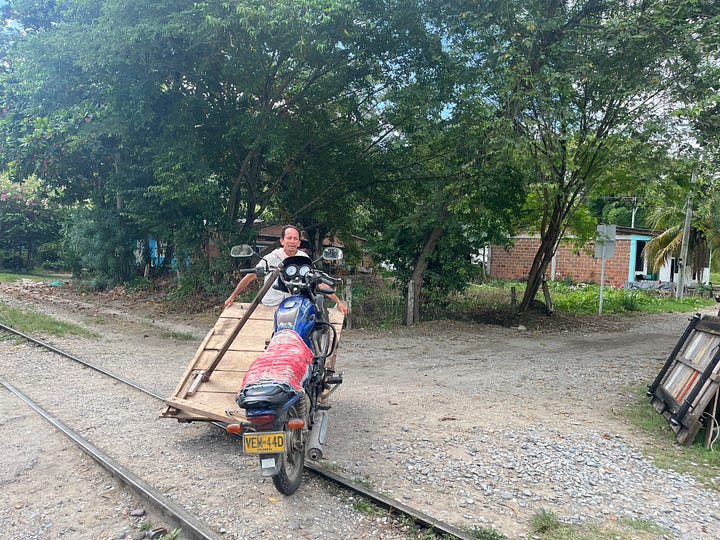
From Santiago Berrio, we cycled the final 25 kilometers inland to meet Garcés at the Rio Claro Reserve. Here we also met Jeny, a social leader from nearby Purto Triunfo, making it our final stop on this stretch of the trip.
Jeny’s poignant thoughts on forgiveness will be the topic of next Sunday's "In Their Own Words." Stay tuned.
Thinking of a similar trip? Check out our past rides or reach out! We offer bespoke cycling trip planning sessions and would love to help you organize your adventure.
The Context Shelf: Unpacking Colombia’s Complex Conflict
Cycling through the Andes often means hours of climbing steep mountains and nights spent camping far from any connection to the outside world. These long stretches offer the perfect time to dive into books, articles, and podcasts. Here, we share some of our favorites with you.
As Garcés’s story shows, Colombia’s conflict is long and complicated, difficult to understand, and far from over.
In January, violence intensified in Catatumbo, a region in the department of Norte de Santander. An estimated 50,000 have been displaced – forced to flee with nothing. Another 25,000 are effectively being held hostage, unable to leave their towns or homesteads because of armed groups’ lockdowns.
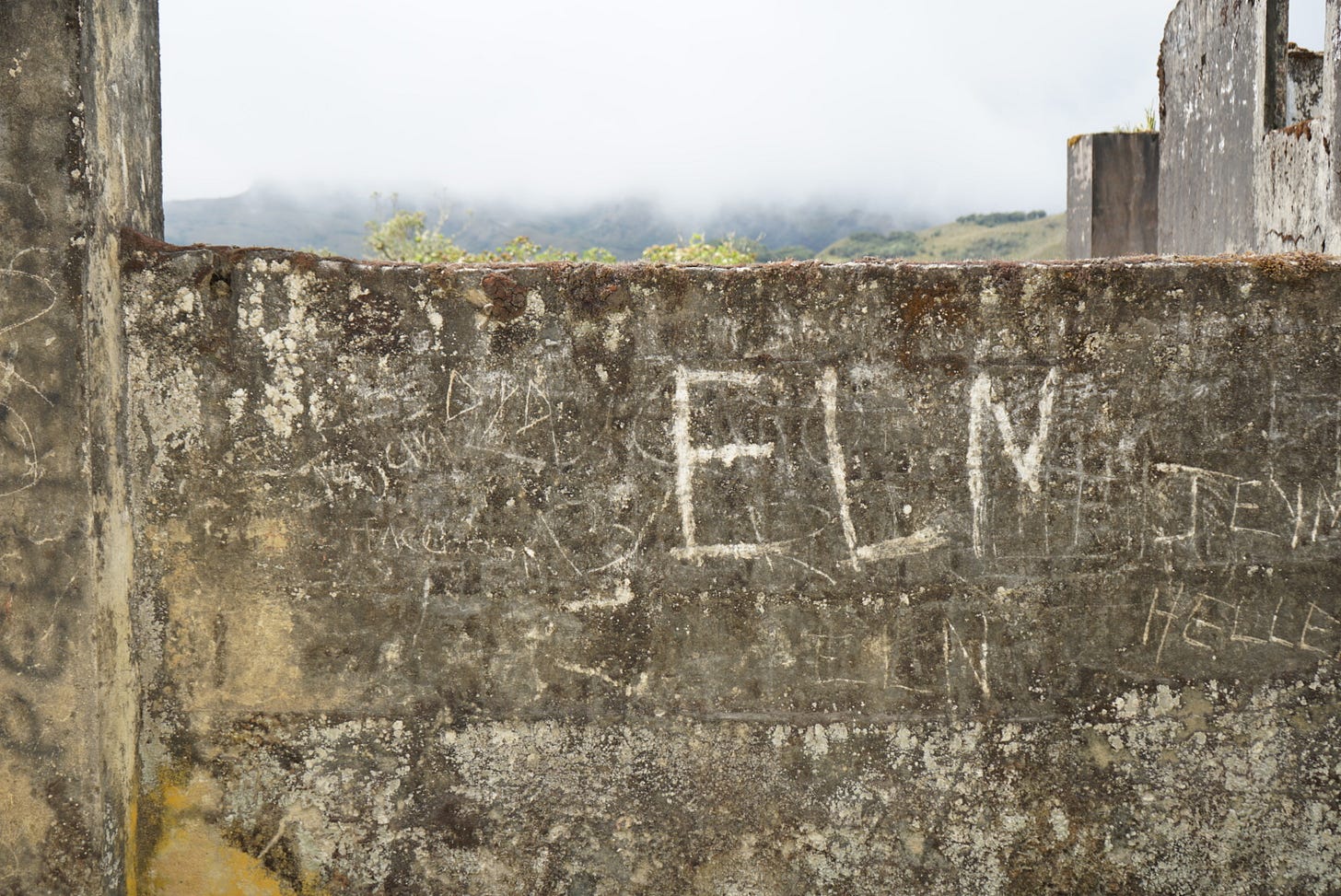
For those trying to grasp this ongoing conflict (one of the world’s longest), we recommend starting with “De Pizarro’s: Eén familie, drie generaties en honderd jaar strijd in Colombia” by Robert-Jan Freule (for now only available in Dutch).
Freule narrates the conflict through three generations of the Pizarro family: a father who served as the commander-in-chief of the Colombian navy, his children, several of whom became guerrillas fighting in the revolution, and grand-children — one of whom currently serves in the country’s senate.
For those looking for a shorter, but more policy-focused piece, “Colombia: From “Total Peace” to Local Peace” is a great read. This briefing, published at the end of January, by the NGO International Crisis Group, outlines the successes and pitfalls of the current attempt at peace while putting it into context of the conflict’s long and winding history.




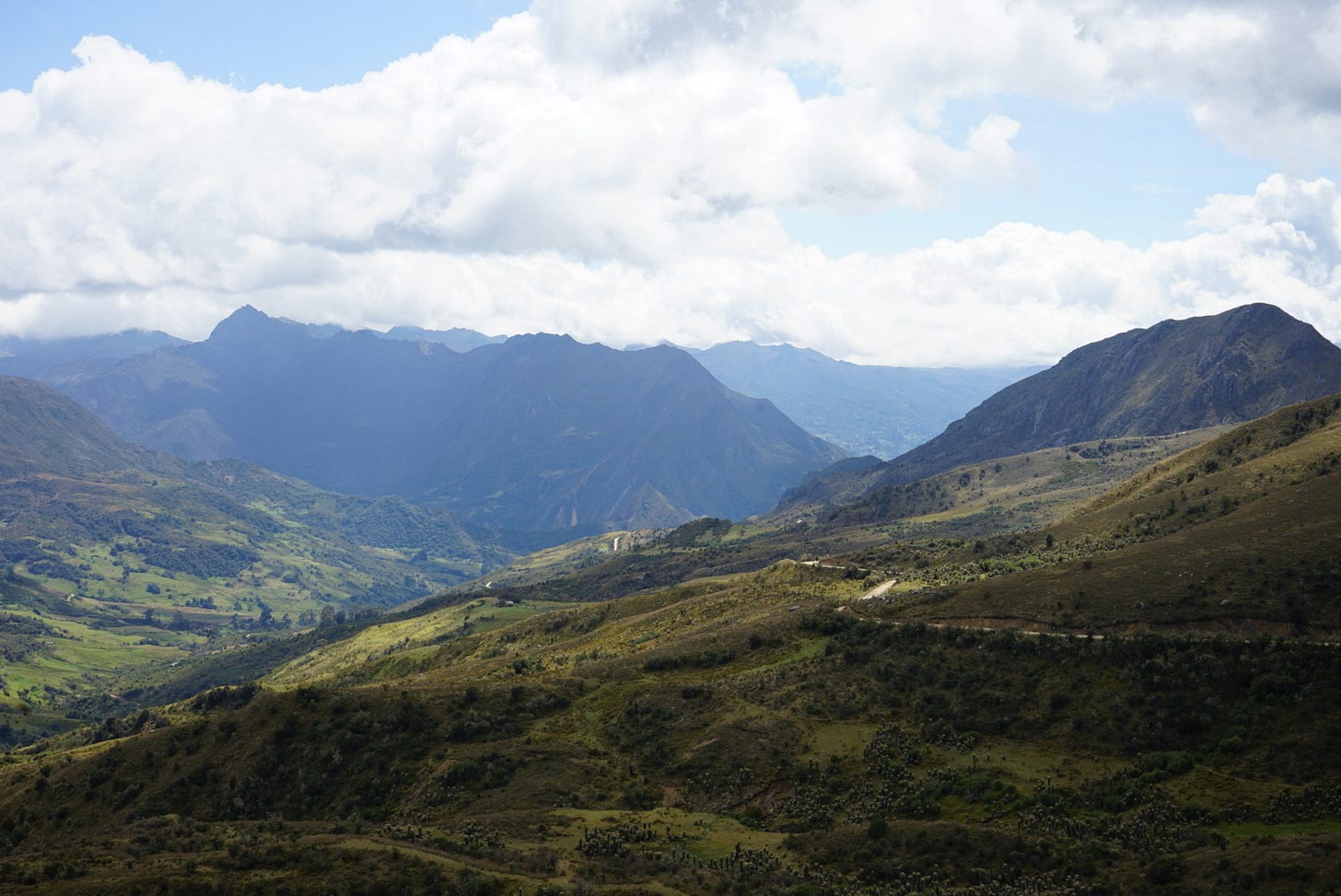
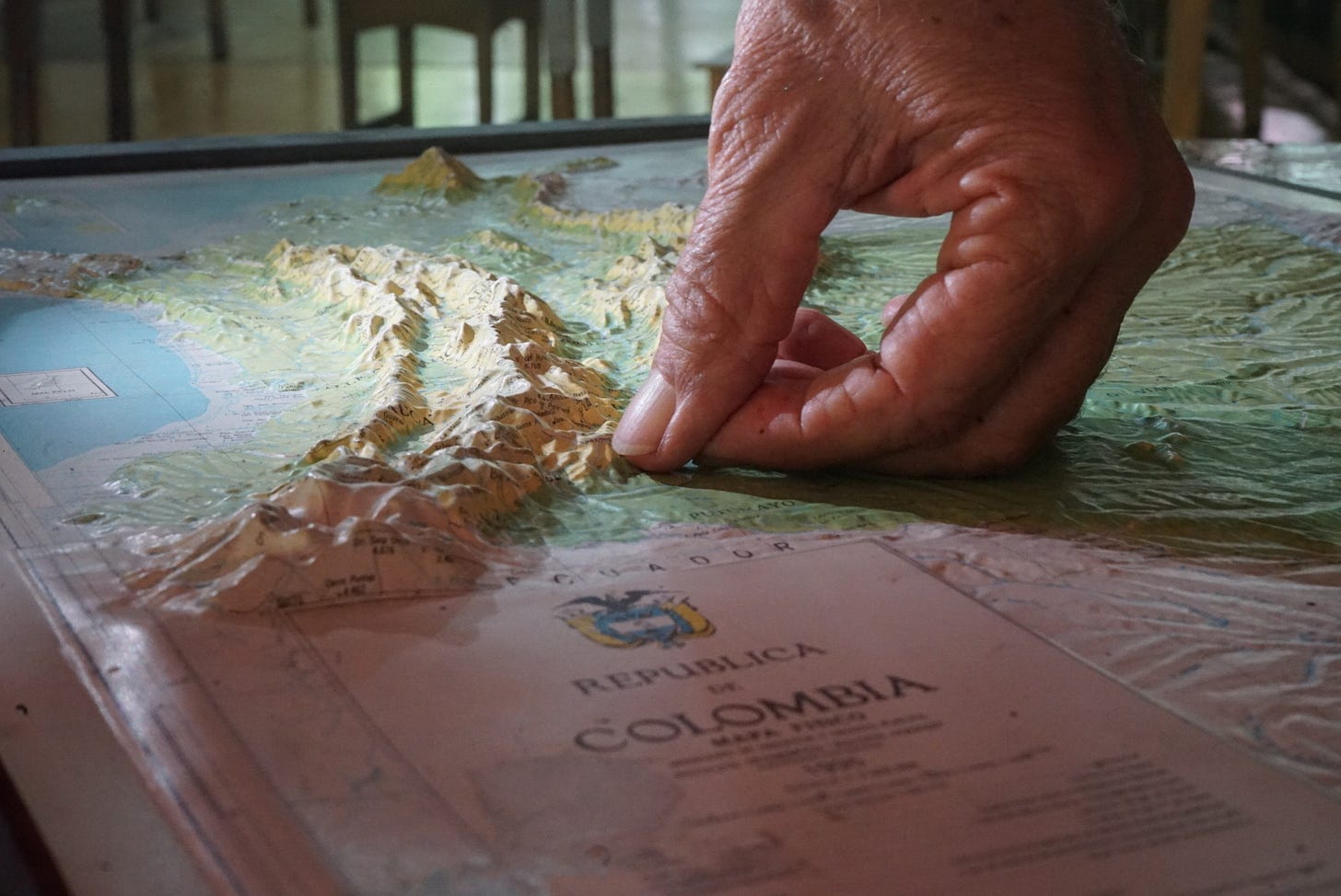
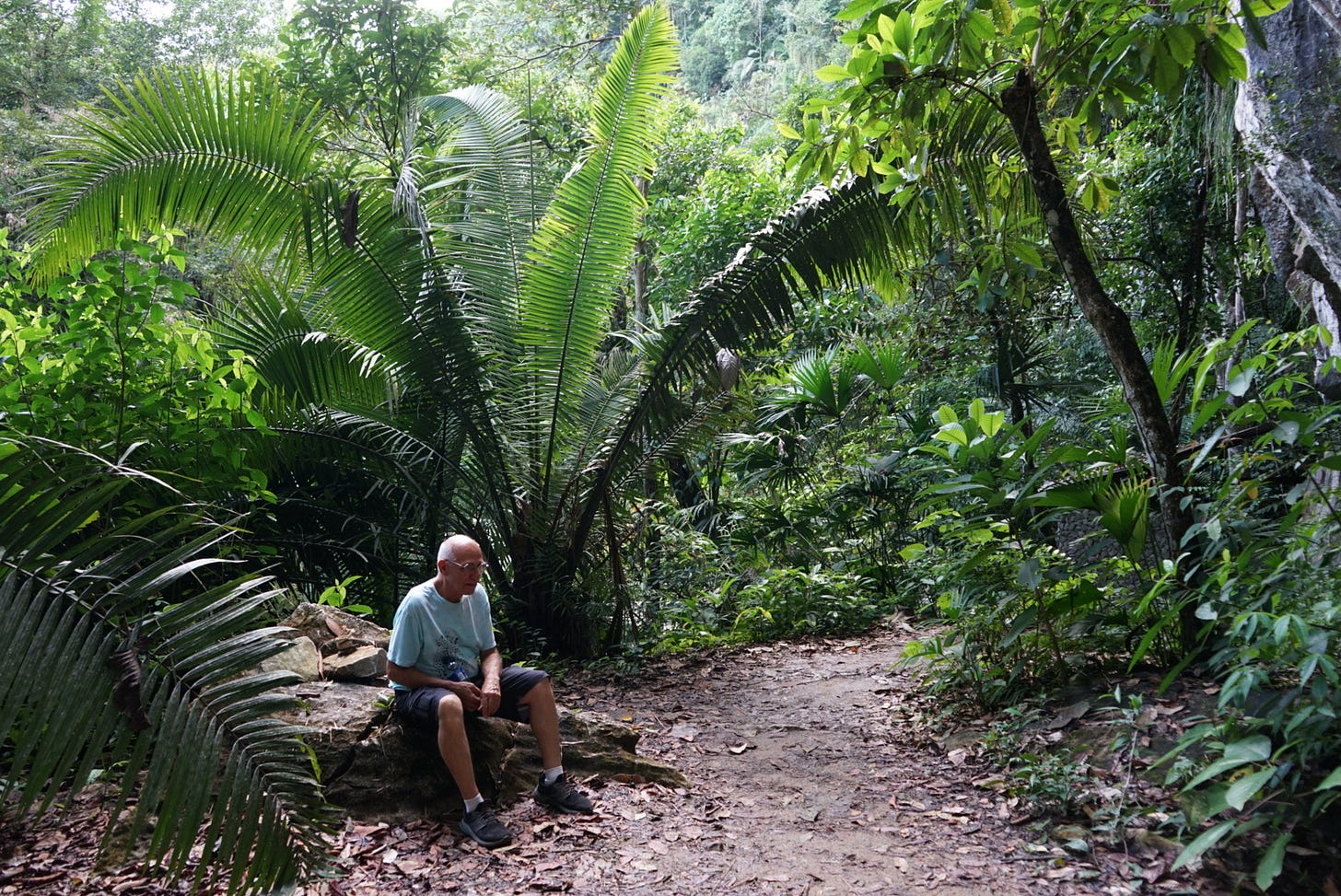
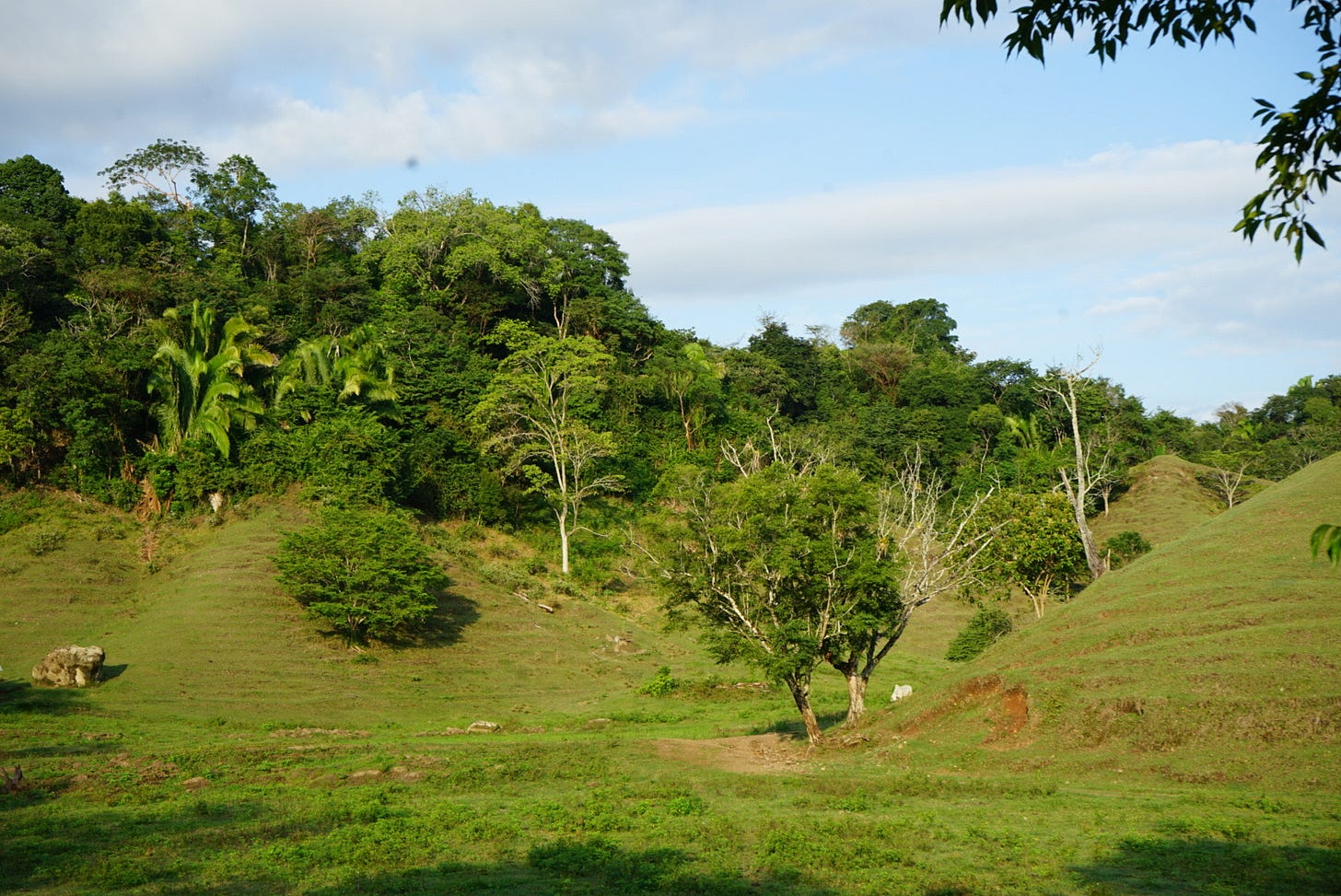
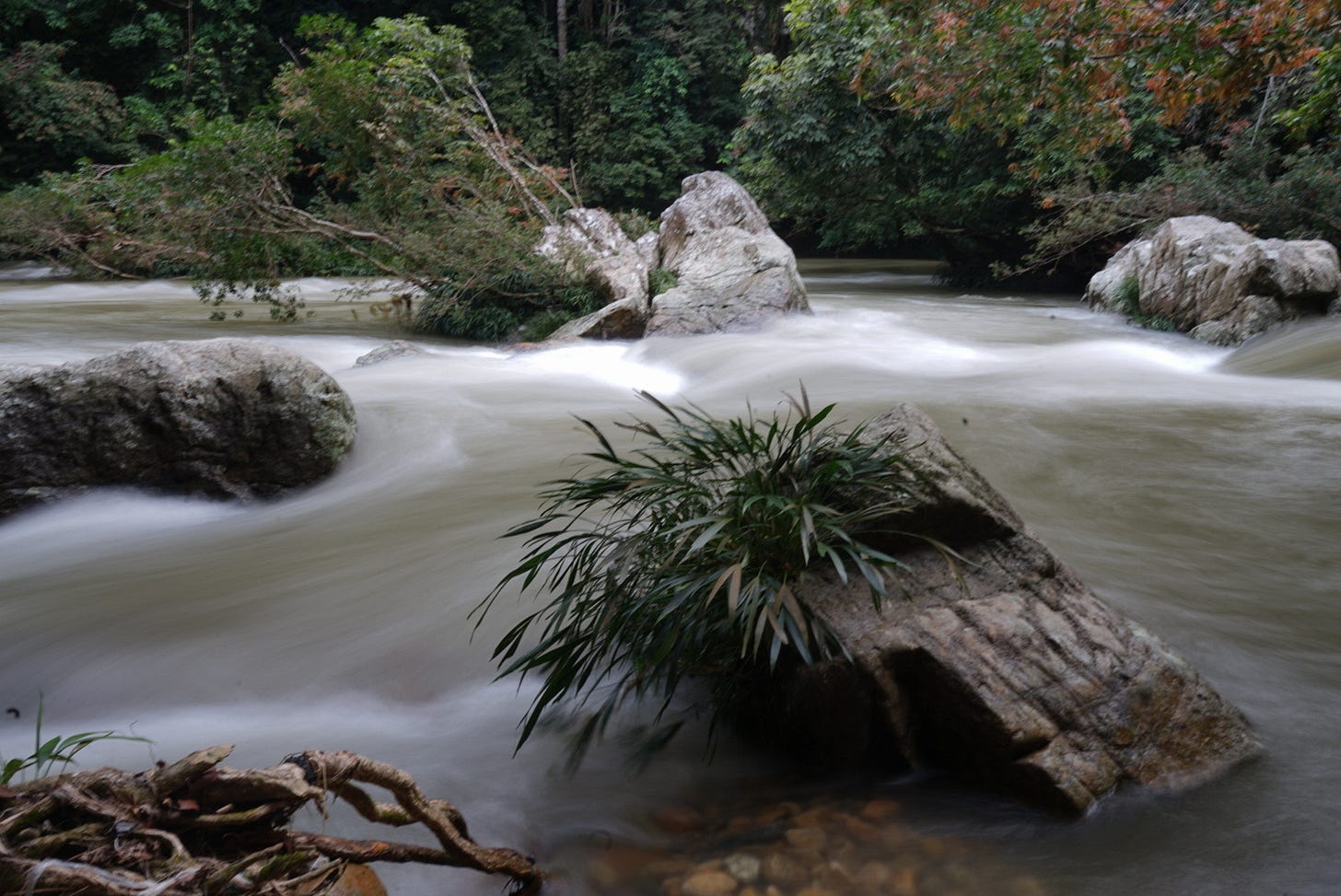
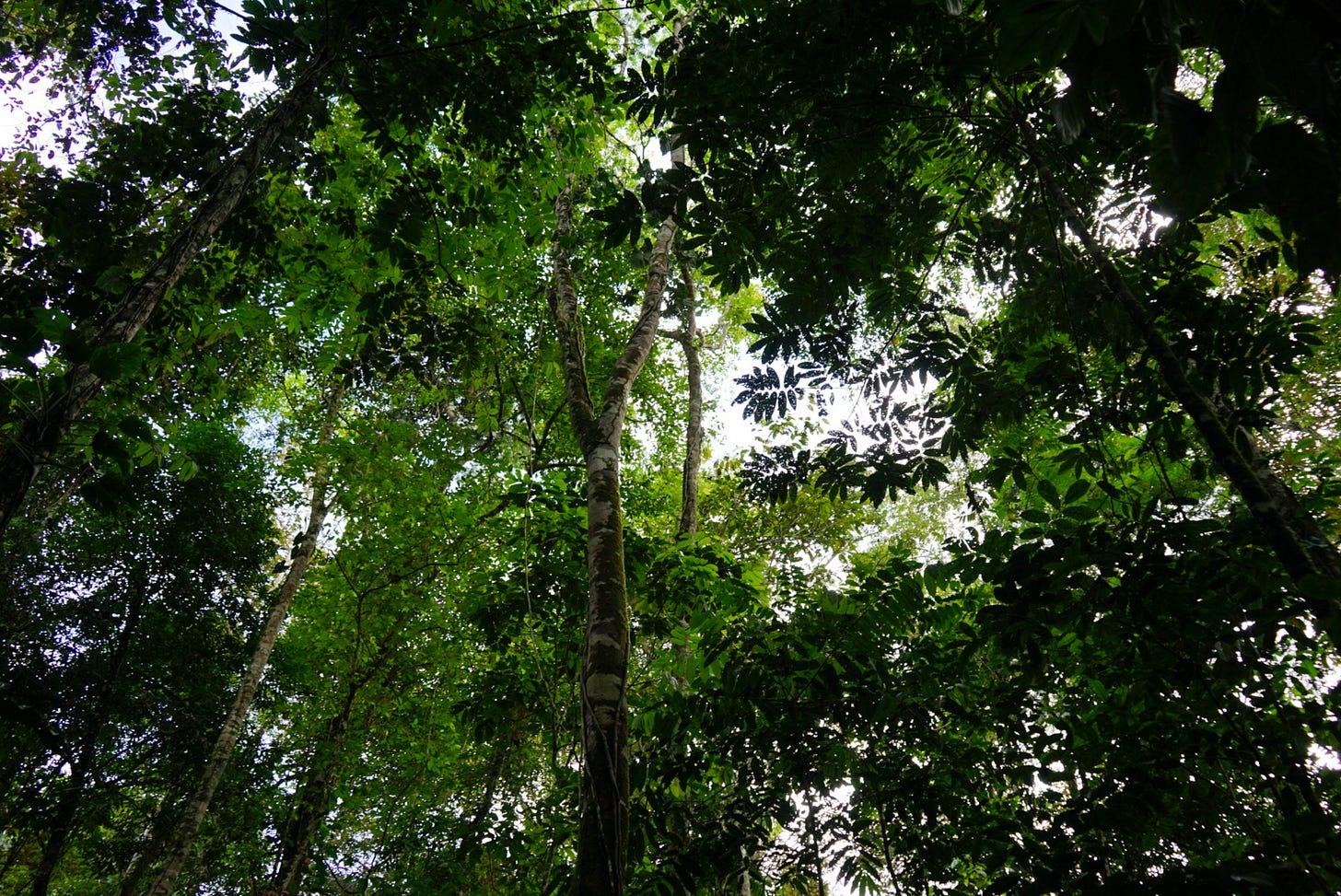
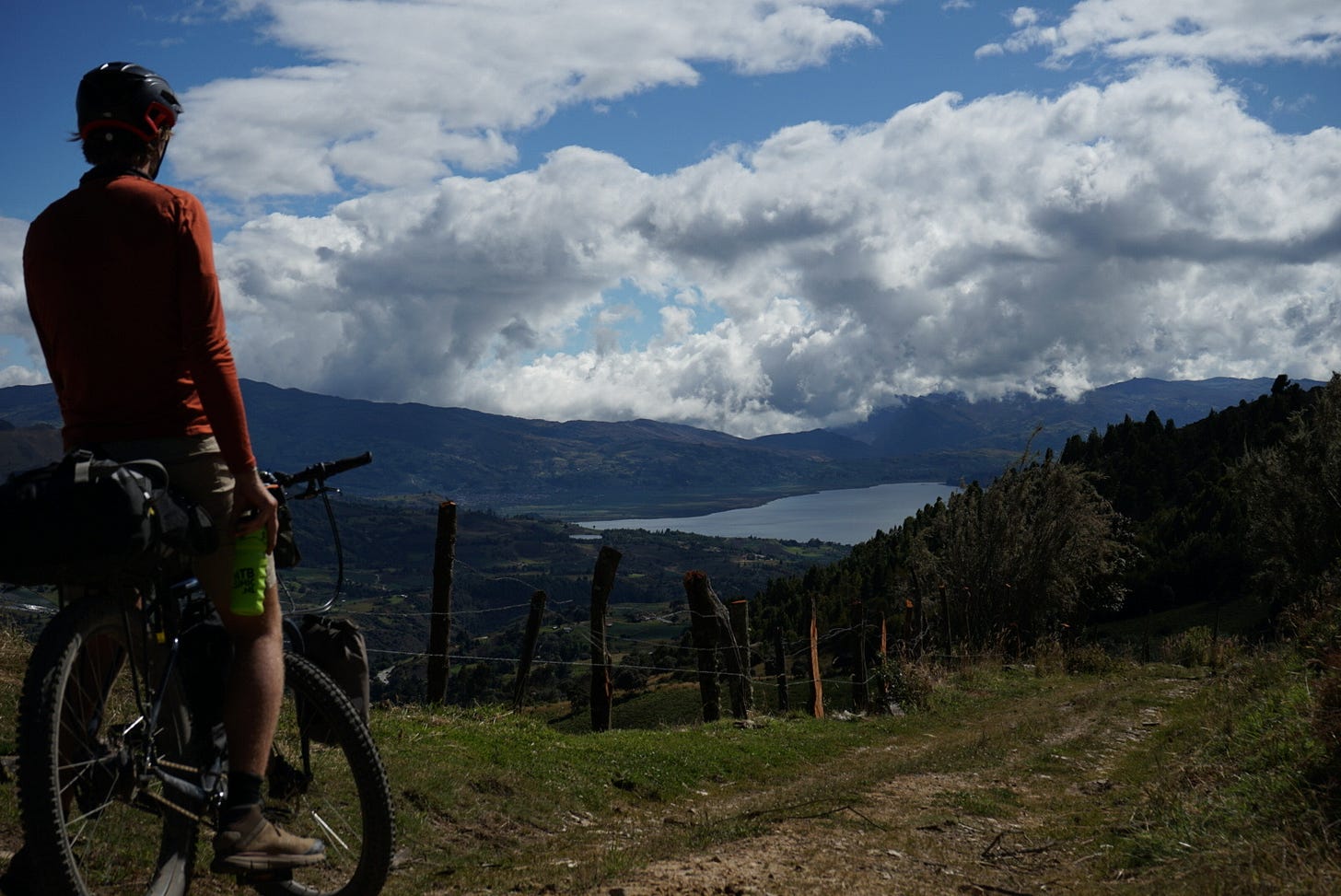
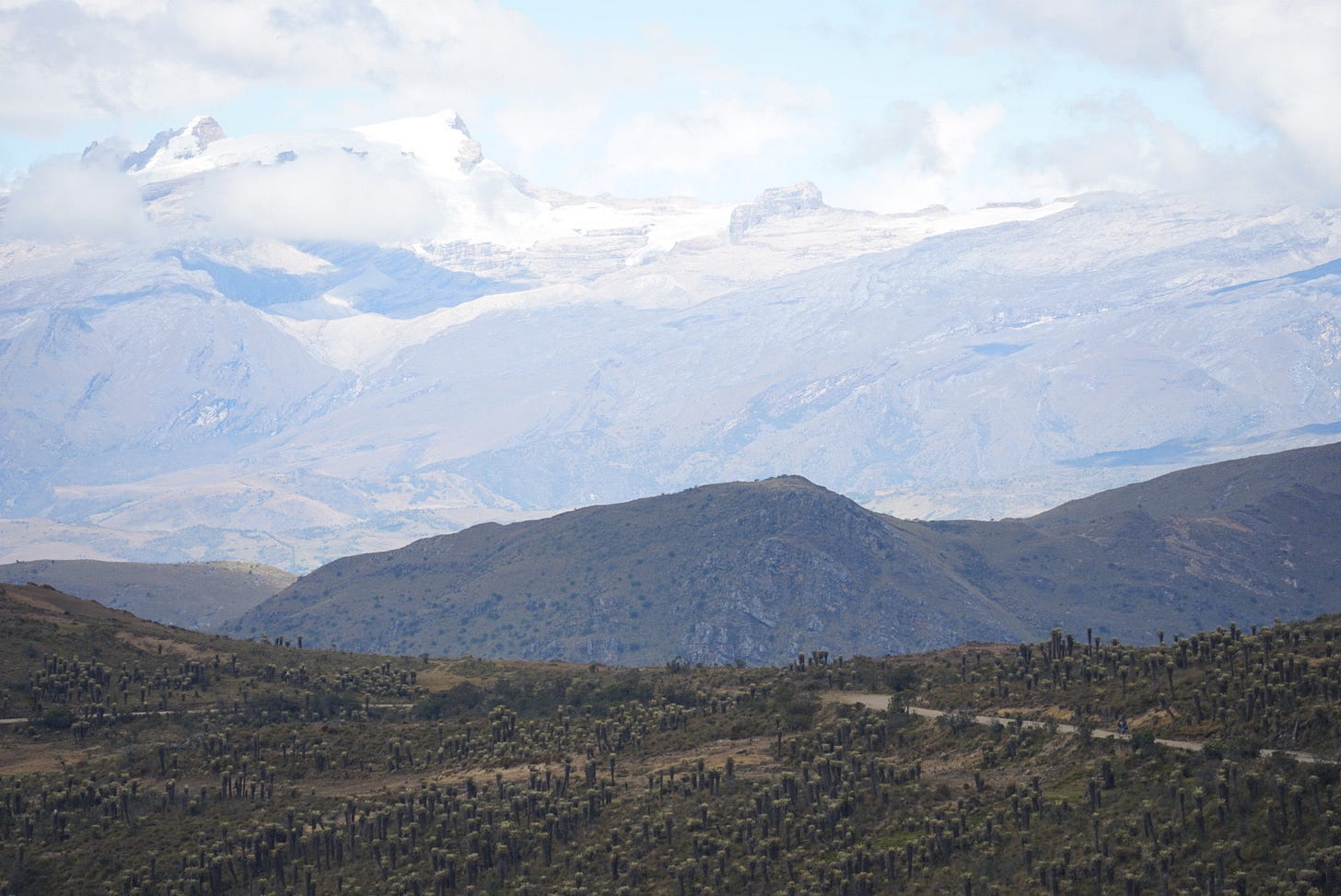
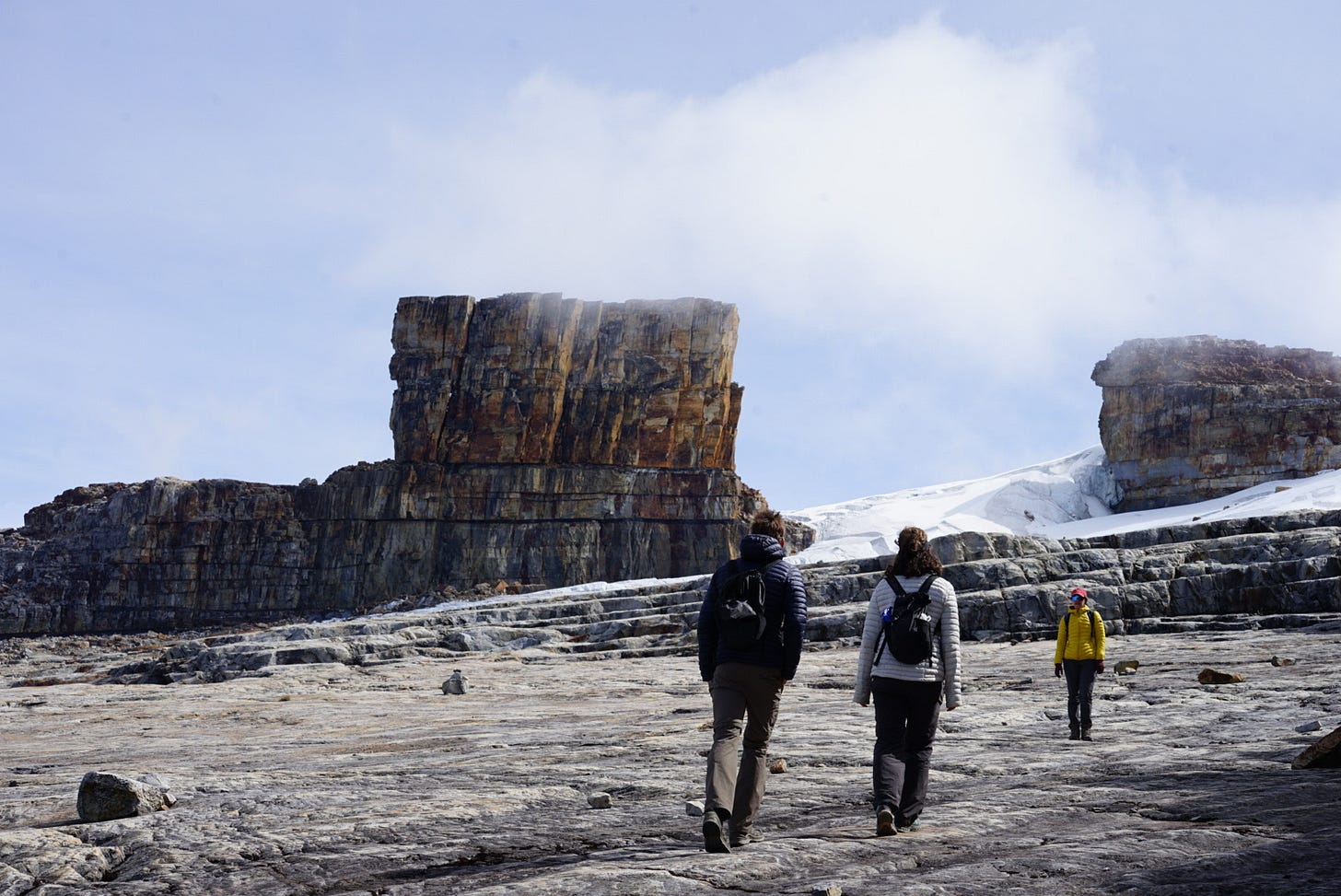
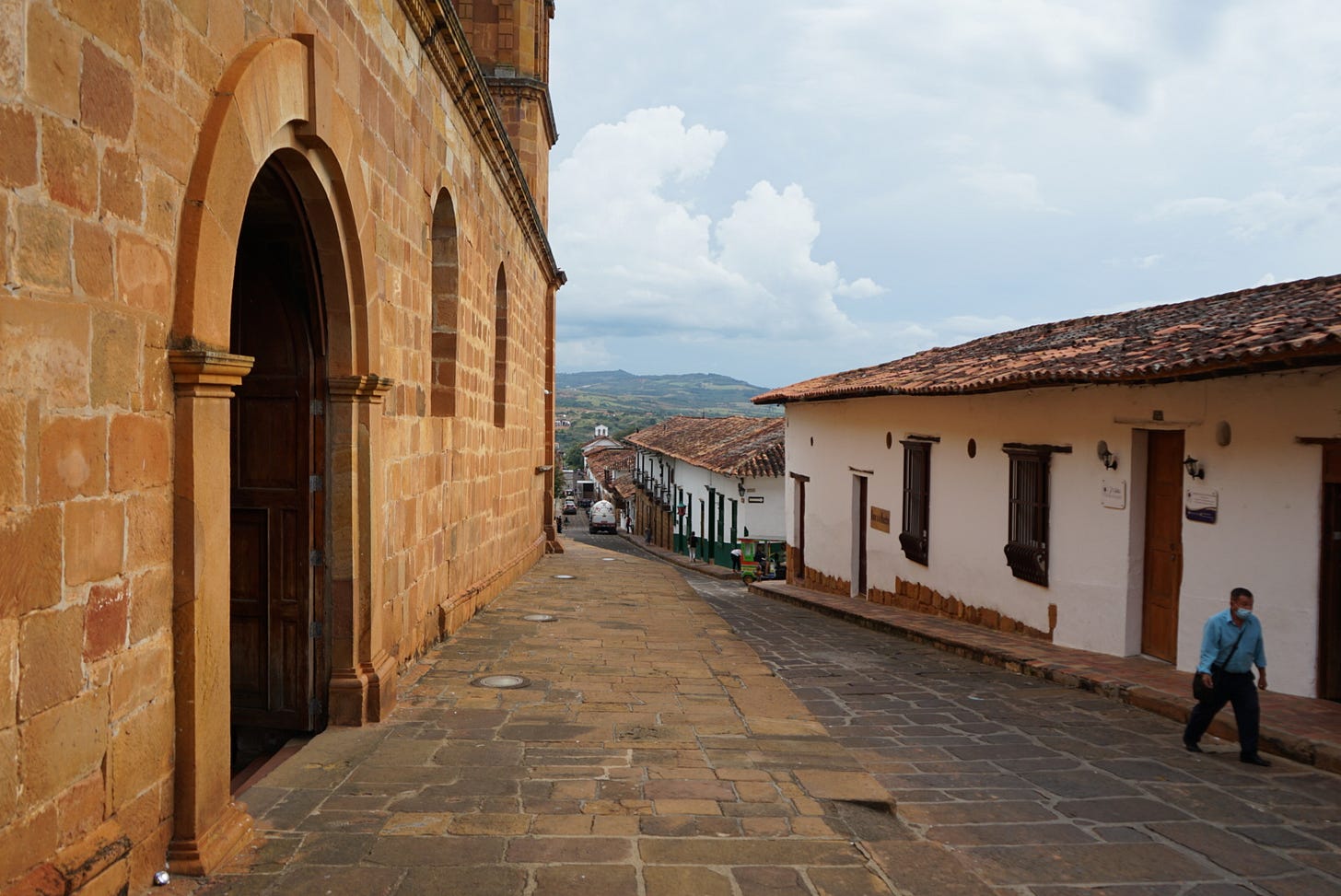
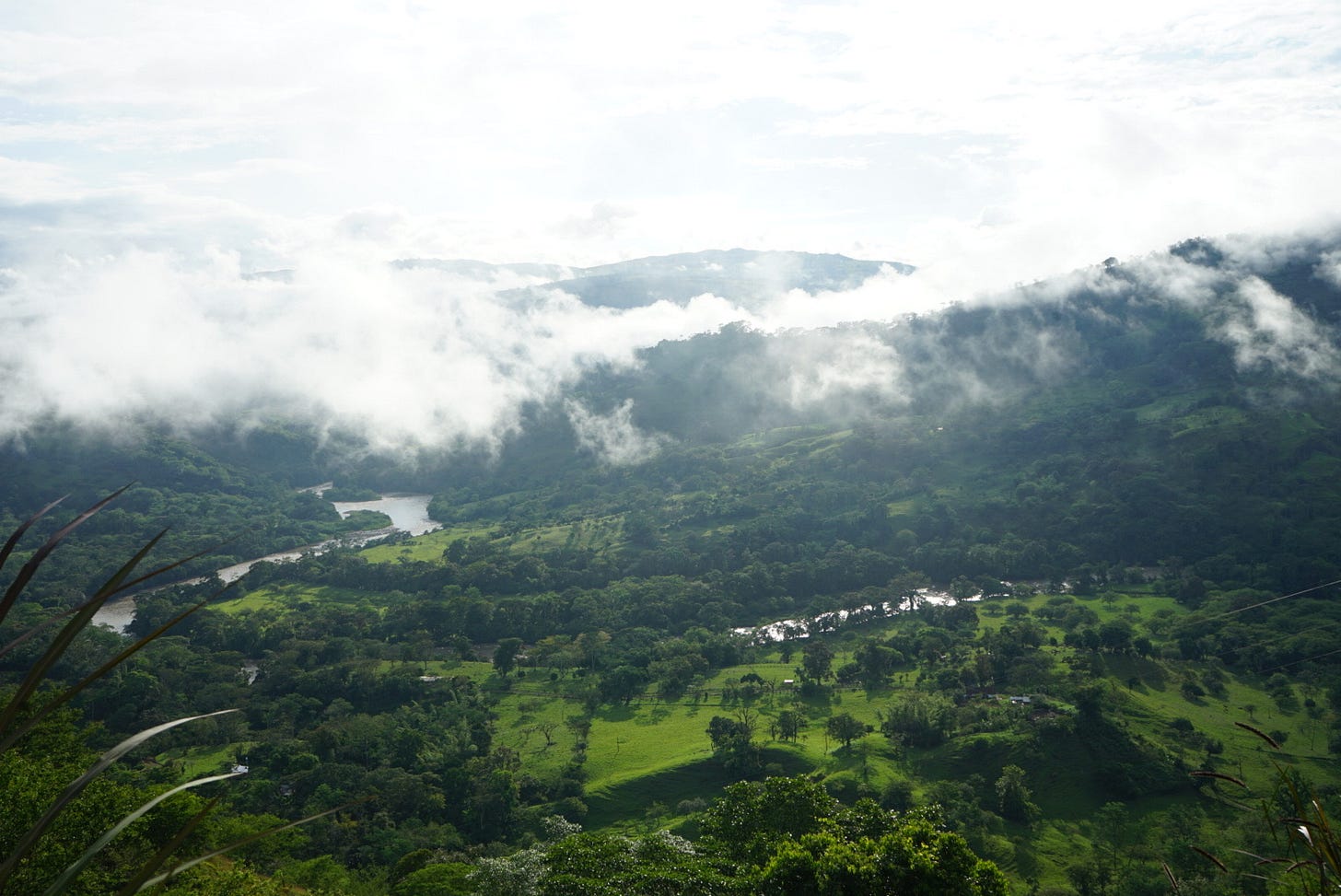
Very interesting stories. 😘
Great stories!